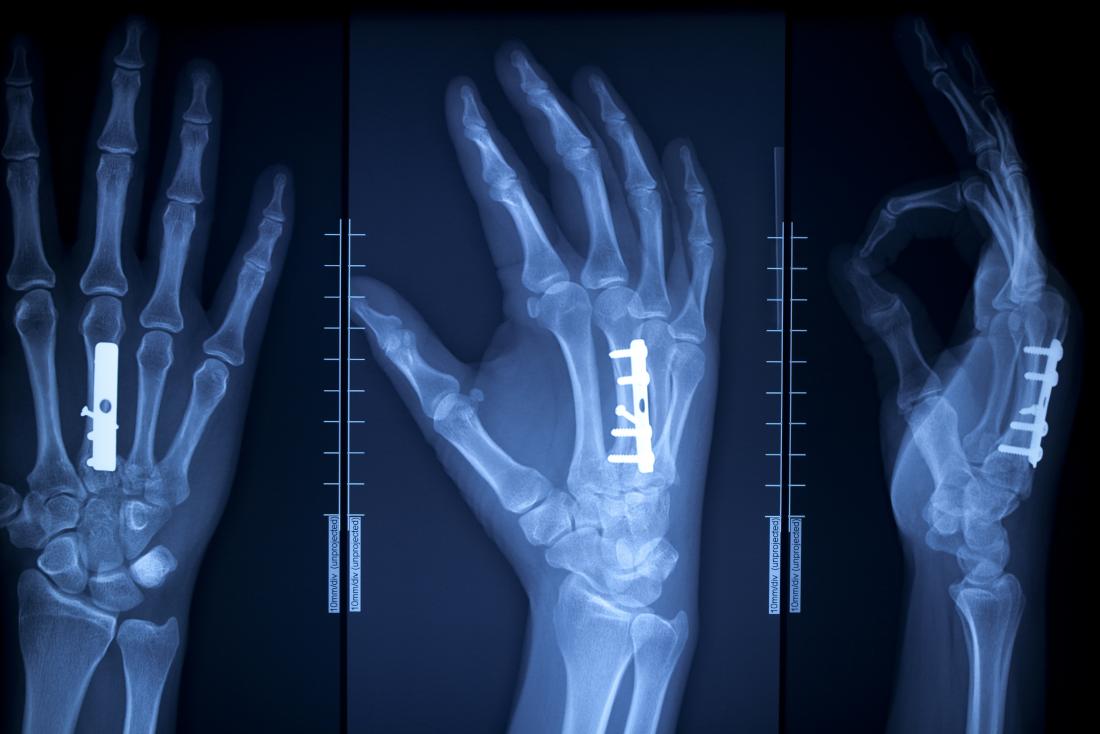In this article, learn about the uses of a bone graft, the different types, and the possible risks.
What is a bone graft?

Bone grafts are used in a variety of surgical procedures.
A person may need a bone graft if their body is unable to produce enough new bone in certain situations.
Bone grafts can help in the treatment of:
- fractures, especially if they are not healing properly
- bone defects, including:
- infections
- osteonecrosis, which is the loss of blood supply to the bone
- trauma
- injuries
- benign tumors and cysts
- birth abnormalities
- spinal fusion or other fusions
- joint problems
There are risk factors that increase the likelihood of a fracture not healing. These include:
- smoking
- advanced age
- a suppressed immune system
- diabetes
Types of bone substitutes
Bone grafts are available in a variety of substances. These bone substitutes can be biological (natural) or synthetic.
Substitutes need to have several specific properties to be suitable for bone grafts.
Bones are porous, meaning that they contain tiny holes. A bone substitute with similar gaps allows blood vessels to grow into the graft to supply nutrients and encourage new bone growth.
Re-absorption is also essential for bone growth. Specific cells continuously break down bones and rebuild them.
Substitutes that break down too quickly are not suitable for bone grafts, as they do not allow enough time for the new bone to grow.
Conversely, some substitutes re-absorb too slowly, which can cause inflammation.
Biological substitutes

The graft may use bone from the person’s body.
There are two sources of bone for biological substitutes:
- Autografts, where surgeons use bone from the person’s own body.
- Allografts, where surgeons take bone from a deceased donor.
Below are some examples of bone grafts and their common uses.
De-mineralized bone matrix
This graft comprises bone that is 93 percent collagen. It also contains growth factors to help the bone grow.
One of its main benefits is that it rarely causes an immune response. Doctors typically use it as filler, rather than as a complete bone substitute.
De-mineralized bone matrix can help in the treatment of:
- fractures that are not joining properly
- benign tumors and cysts
- cranioplasty
Platelet-rich plasma
This substitute has a low infection rate but is not strong enough to be a stand-alone bone substitute.
Hydroxyapatite
Hydroxyapatite is a mineral that occurs in bones and teeth. It consists of calcium phosphate, which is what makes bones and teeth hard.
Doctors may use hydroxyapatite for:
- hand surgery
- dental procedures
- cranioplasty
Corals
This substitute has a porous structure similar to spongy bone. It can also act as a growth factor carrier to aid bone repair.
It has a slow reabsorption rate but does not cause inflammation.
Synthetic substitutes
Man-made bone substitutes include the following:
Calcium sulfate
Calcium sulfate is also known as gypsum or plaster of Paris. It is an inexpensive product with a similar structure to bone.
Doctors typically use calcium sulfate to support other grafts because it reabsorbs too quickly on its own.
In combination with other grafts, doctors may use it for:
- fractures that are not joining properly
- hand surgery
Tricalcium phosphate (TCP) ceramics
There are different types of ceramic bone grafts. A doctor may use them for:
- fractures that are not joining properly
- long bone fractures
- cranioplasty
- hand surgery
- medical knee arthritis
- dental procedures
Bioactive glasses
Bioactive glasses are porous and do not cause inflammation. They also form a strong bond to bone tissue.
However, glasses are brittle, so they are not likely to be suitable for large areas of the body. Dentists or doctors may use bioactive glasses for dental procedures.
Polymer-based substitutes
Doctors do not generally use polymer-based bone substitutes as bone grafts, as they do not promote new bone growth.
However, they may recommend them in certain instances, including:
Procedure

A surgeon may use surgical pins and plates to hold the graft in place.
A person will typically be under general anesthetic during a bone graft procedure.
A surgeon will make an incision and then place the bone substitute in the damaged area.
They may use additional tools and supports to keep the graft in place, including:
- screws
- wires
- cables
- plates
- pins
The surgeon will close the wound with stitches. Doctors will monitor a person for several hours after the procedure. Before they discharge the individual, they will also provide instructions on how to help prevent infections.
Risks
Risks of a bone graft procedure include:
- nerve injury
- infection
- bleeding
- decreased mobility
- cosmetic defects
- chronic pain
- failure of the graft to accomplish its goal
Recovery
The recovery process depends on many factors, including the type of surgery and the person’s age, physical health, and overall health.
Recovery time can be anywhere from 2 weeks to over 2 months.
The surgeon will provide in-depth instructions for the recovery period. They may also prescribe pain medications.
Eating a healthful diet and not smoking are essential for a good recovery. It is also vital to speak to a doctor or surgeon before purchasing any over-the-counter (OTC) medications in case they interfere with bone growth and healing.
Some people may have a drain in their wound after surgery. If this is the case, a doctor will provide them with instructions on how to look after it.
A person will need to return for follow-up appointments so that a doctor can remove the drain and monitor the healing process.
Let’s block ads! (Why?)





